Amateur built - or homebuilt - aircraft have existed since the beginnings
of aviation when, indeed, all aircraft were 'homebuilt'. In the years
before the Second World War, these aircraft were largely treated as part
of the mainstream of aviation and were allocated registration marks in
the same way as for any other aircraft.
In the years after the Second World War, three main streams of sport aviation emerged (not including parachuting): firstly, activities which involved mainstream 'general aviation' aircraft; secondly, a new wave of amateur building; and thirdly the growth of the gliding movement. The first two categories we need not be concerned with here as the aircraft involved were registered, and carried markings, in the normal way.
Gliders
From a very early stage, the gliding movement and DCA
came to an understanding on the principle of 'self administration'. Under
this principle, in 1953 the Gliding Federation of Australia (GFA) was
given the responsibility for setting and maintaining standards for gliding
operations and airworthiness, activities that in other branches of aviation
were perrformed directly by DCA. As part of this accommodation, the GFA
was given delegated powers to register gliders, and later motor-gliders.
To facilitate this process, the GFA was allocated a block of registrations
in the VH-G (i.e. G for 'glider') block. Gliders could also be
registered outside of this block by the aircraft owner approaching the
Department to transfer a particular registration to the GFA's allocation.
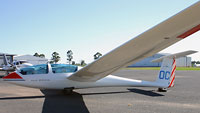
Ultralights
When modern ultralight aircraft first appeared in the late 1970s, it is fair to say that the Department was unsure how to deal with them. Some form of regulation was required and this took the form of CAO 95.10, first issued in November 1976. Incidentally, this was the first regulation in the world designed specifically to cover powered ultralight flying machines. Initially, ultralight aircraft were banished into the airspace below 500 ft AGL (mostly unused by 'serious' aircraft) and were also not permitted to fly within a certain distance of people, or to cross public roads. Nor were they required to be registered.
It was not
until after the House of Representatives Standing Committee on Transport
Safety issued a report on Sports Aviation Safety in 1987 (known
as the 'HORSCOTS Report') that the regulations covering ultralights, by
then also embracing commercially-built two-seaters under CAO 95.25, were
amended to require the registration of ultralight aircraft with the Australian
Ultralight Federation (AUF) by the end of 1988.
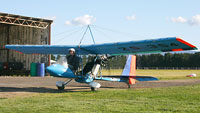
In 1990, an additional set of standards for ultralight aircraft appeared.
CAO 95.32 covered powered hang-gliders (formally, weight-shift controlled
microlights, but universally known as 'trikes'), which could either be
registered with the AUF or the Hang Gliding Federation of Australia (HGFA),
and powered parachutes which could only be registered with the AUF. Note
that unpowered hang gliders were, and are, not required to be registered.
CAO 95.55 covered conventional three-axis control aircraft registered
with the AUF.
The AUF (from April 2004 Recreational Aviation Australia - RAAus) simply extended its existing registration system for these new categories of aircraft, starting again with individual numbers and using the relevant prefix.
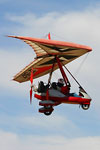
Since that time, additional categories of 'ultralight' aircraft have been created, with registrations in the new categories following the established pattern. The first of these new categories was for aircraft meeting the airworthiness standards of CAO 101.28, the mainstream 'amateur built' aircraft airworthiness standard, and registered under CAO 95.55. These aircraft types were formerly all registered on the Australian Register, but under the new rules aircraft in this category that met the ultralight parameters could be registered as ultralights (28-series).
The 24-series is for factory-built aircraft registered under CAO 95.55 and has replaced the 25- and 55-series, which are closed to new designs. In this category are also a few lightweight 'general aviation' aircraft that have transferred from the Australian Register to the RAAus register. These aircraft can be used commercially for flying training. The 19-series is for heavier, higher-performance homebuilt or kitbuilt aircraft, also registered under CAO 95.55, and these aircraft can be used for private operations only.
As of 2004, aircraft on the RAAus Register were formally accorded the status of Australian Aircraft.
Gyroplanes
In the 1930s a number of Cierva gyroplanes were imported into Australia. These aircraft were registered on the Australian Register, but all had been withdrawn from service by the end of the Second World War. The advent of lightweight gyroplanes in the 1980s saw a different approach taken. These aircraft are the purview of the Australian Sports Rotorcraft Association (ASRA). Gyroplanes are registered under CAOs 95.12 or 95.12.1, and gyro gliders are registered under CAO 95.14.
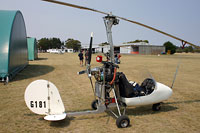
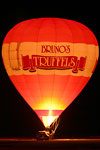
Balloons
Manned free balloons are the responsibility of the Australian Ballooning Federation, are registered on the Australian Register and carry normal registration marks.
Back to the main article on The Registration Markings of Australian Aircraft
Back to the main Industry
Regulation & Aviation Policy index
Back to the main Airworthiness index